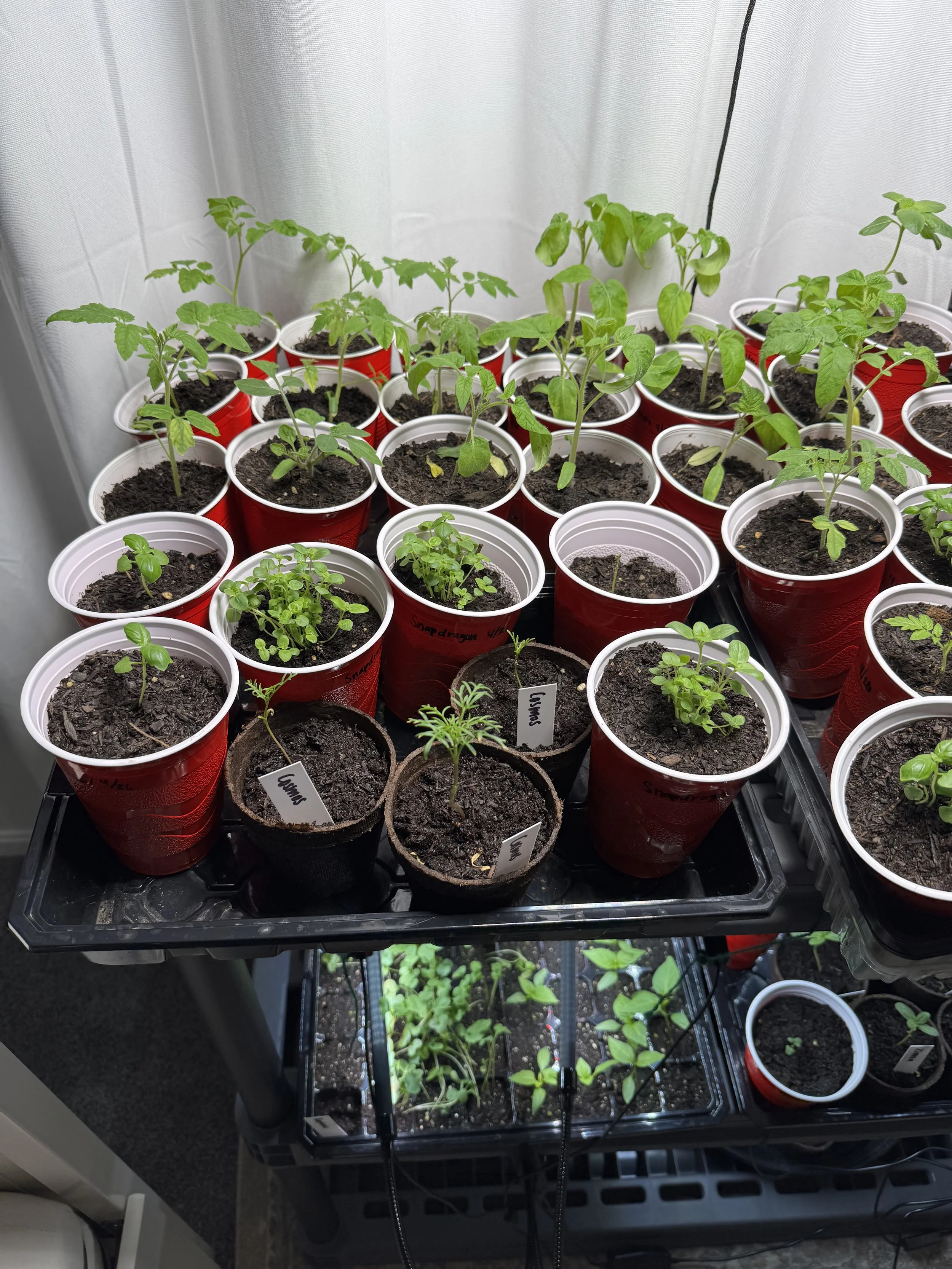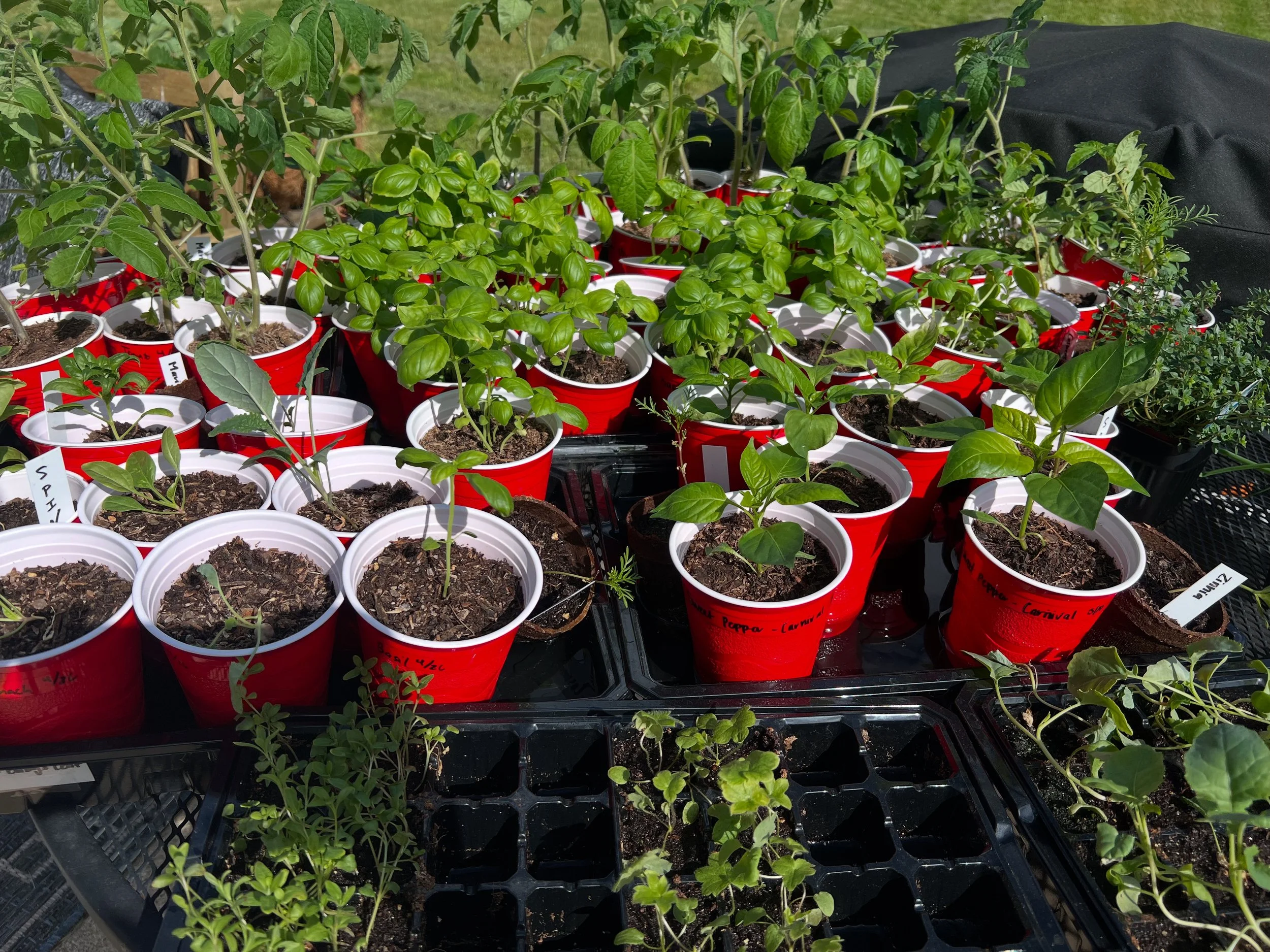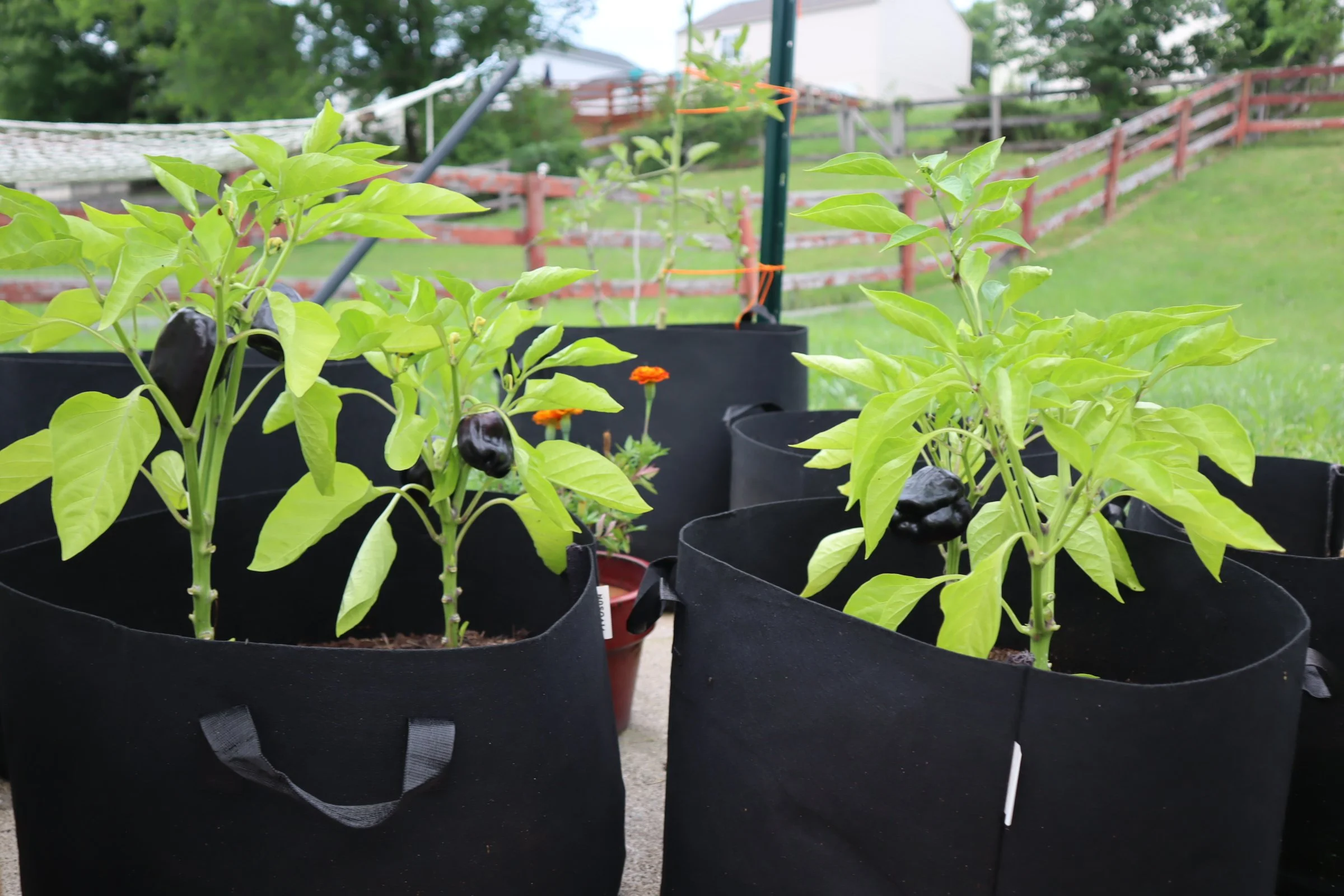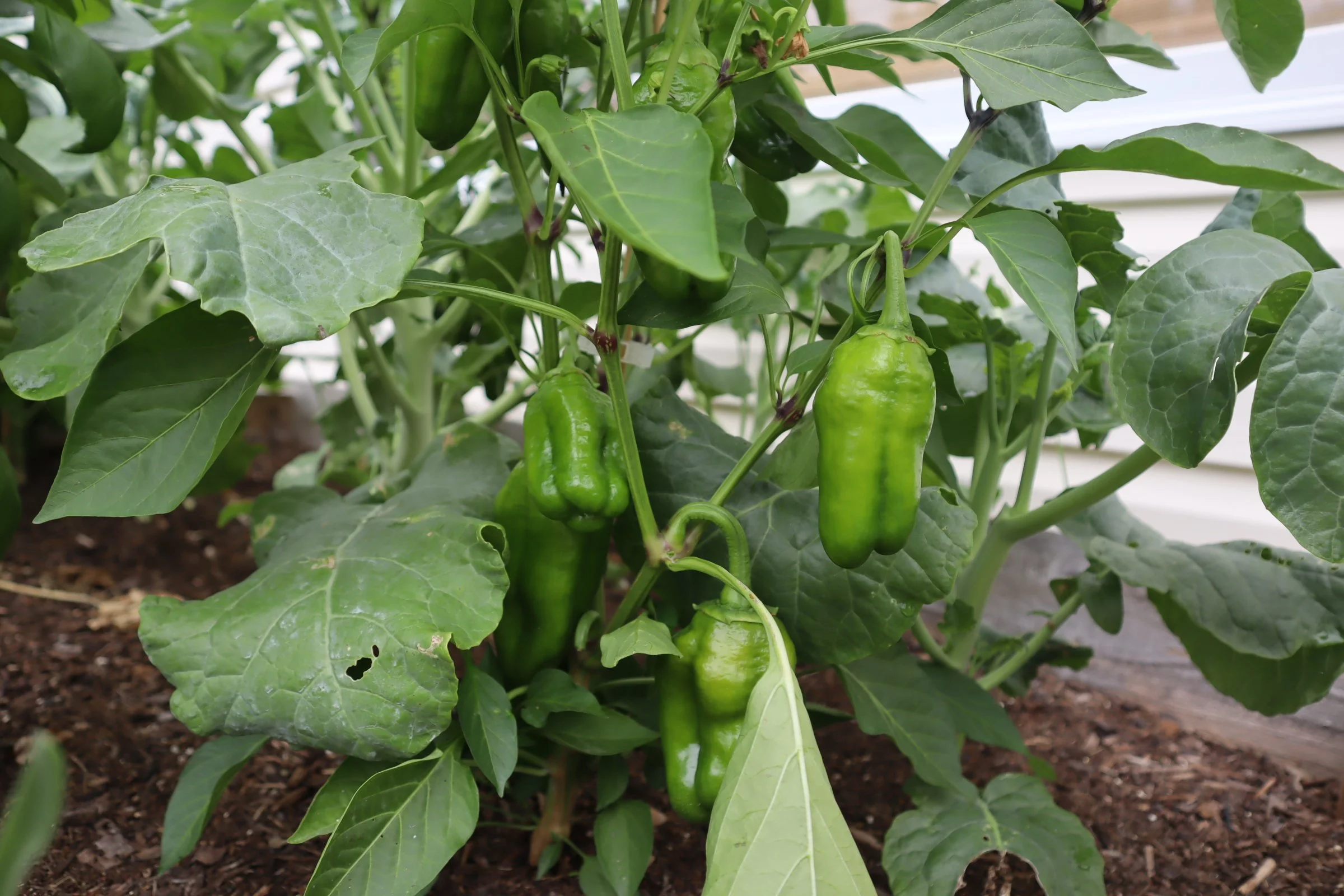Growing Carnival Sweet Peppers: From Seed to Harvest
Carnival sweet peppers are a colorful, cheerful addition to any garden—and they're surprisingly easy to grow! From seed starting tips to harvest, here's everything you need to know for a thriving pepper crop in raised beds, grow bags, or containers.
There’s something magical about growing your own food, and carnival sweet peppers are one of my favorite crops to nurture from seed to harvest. Their bright, cheerful colors—yellow, orange, red, and sometimes even purple—make them just as pretty as they are tasty. Whether you’re growing in raised beds, grow bags, or containers, these peppers can thrive with just a little care, sunshine, and patience.
In this guide, I’ll walk you through every stage of growing carnival sweet peppers, starting from seed and ending with a bountiful, beautiful harvest.
Starting from Seed
When to Start Seeds Indoors
To give your peppers a head start, begin seeds indoors 8–10 weeks before your last expected frost date. Peppers are heat-loving plants and need warm soil to germinate—starting indoors is a must in most climates.
For example, if your average last frost is around April 20, aim to start seeds indoors between early to mid-February.
How to Start Pepper Seeds
You’ll need:
High-quality seed starting mix
Seed trays or small pots
A heat mat (optional, but helpful)
Grow lights or a sunny window
Carnival sweet pepper seeds
Steps:
Moisten your seed starting mix so it’s damp but not soaking.
Fill your trays or pots with the mix and press it down gently.
Sow your seeds about ¼ inch deep and cover lightly.
Place the trays on a heat mat if your home is cool. Ideal germination temperature is 75–85°F.
Keep the soil moist but not soggy.
Once seeds germinate (usually in 7–14 days), move them under grow lights or to a bright window.
Peppers need 14–16 hours of light daily at this stage, so supplementing natural light is often necessary.
Potting Up Seedlings
Once your seedlings have 2–3 sets of true leaves, transplant them into slightly larger pots. This encourages strong root development before they go outside. Continue keeping them warm, lit, and watered—but avoid overwatering, which can lead to root rot or damping off.
Hardening Off & Transplanting Outdoors
When to Transplant Outdoors
Carnival sweet peppers are very sensitive to cold. Wait until 2 weeks after your last frost, and only transplant when nighttime temps consistently stay above 55°F. Soil should be warm—ideally around 70°F.
Hardening Off
Before transplanting outdoors, harden off your seedlings for 7–10 days:
Set them outside in a shaded, protected spot for a few hours.
Gradually increase time and sun exposure each day.
Avoid windy or rainy days early on.
This transition reduces transplant shock and strengthens the plants.
Choosing Your Growing Space
Raised Beds
Peppers love raised beds because of the excellent drainage and warm soil. Make sure your bed gets 6–8+ hours of sun daily, and plant in well-amended soil rich in organic matter.
Spacing: 18–24 inches apart, with 24–36 inches between rows.
Grow Bags
Grow bags are a fantastic option for peppers. Use at least 5-gallon bags, though 7–10 gallon is even better for root space.
Use a high-quality potting mix and consider adding compost or worm castings for a nutrient boost. Ensure your bags are placed in a sunny, warm spot.
Containers
Use containers at least 12 inches wide and deep. Avoid shallow pots—peppers need room to grow deep roots. Make sure pots have drainage holes, and consider using mulch to help retain moisture.
Light, Water, and Soil Requirements
Sunlight
Peppers are sun worshippers. The more sun, the better—aim for 8+ hours of direct sun per day. If you have a shady yard, grow bags or containers can be moved to chase the sun.
Soil
The ideal soil is:
Loamy and well-draining
Rich in organic matter
pH between 6.2 and 7.0
Add compost, aged manure, or worm castings to enrich the soil. Peppers benefit from fertile ground but don't need overly rich nitrogen levels, which can cause excessive leafy growth and fewer fruits.
Watering
Peppers prefer consistent moisture, but don’t like soggy soil. Water when the top inch feels dry. In containers or grow bags, you may need to water daily during hot stretches.
Use mulch (straw, shredded leaves, or compost) to:
Retain moisture
Regulate soil temperature
Suppress weeds
Supporting Healthy Growth
Fertilizing
Start with a balanced organic fertilizer when transplanting (like 5-5-5), then switch to a low-nitrogen, high-phosphorus and potassium fertilizer once the plant starts flowering.
Feed every 2–3 weeks, or as needed, depending on your soil’s richness.
Pruning & Staking
While not strictly necessary, pruning lower leaves and suckers can improve airflow and reduce disease.
Use stakes or tomato cages to support the plant as it grows—especially once it’s loaded with fruit.
Pollination & Flowering
Peppers are self-pollinating, but you can give nature a hand by:
Gently shaking the plant or tapping flowers
Using a small paintbrush to transfer pollen
If flowers drop without setting fruit, heat stress or lack of pollination might be the cause.
Harvest Time!
Carnival sweet peppers start off green and gradually ripen to a mix of red, yellow, orange, or even purple, depending on the variety. You can harvest them green but letting them ripen fully brings out their best sweetness and color.
Expect to begin harvesting around 60–80 days after transplanting.
Harvest tips:
Use scissors or pruners—don’t pull!
Harvest often to encourage more production
Store ripe peppers in the fridge for up to a week or freeze for later use
Common Issues & How to Prevent Them
Pests
Aphids: Blast off with water or spray with neem oil
Cutworms: Use collars at the base of young plants
Pepper maggots & beetles: Monitor closely and hand-pick or cover with row covers
Diseases
Blossom end rot: Caused by calcium deficiency and irregular watering—mulch and consistent moisture help
Fungal diseases: Space plants properly and water at the base, not overhead
Why I Love Growing Carnival Sweet Peppers
There’s something joyful about walking outside and seeing a plant you started from seed producing vibrant, glossy peppers in every shade of the rainbow. These little fruits are:
Perfect for snacking, roasting, and stuffing
High in vitamin C
Easy to freeze for winter use
A kid-friendly crop to grow and pick
Whether you're a first-time gardener or a seasoned grow-bag veteran, I highly recommend trying your hand at these colorful gems. They're a bright reminder that gardening is not just about food—it’s about beauty, patience, and the joy of creating life from the soil up.
Final Tips
Start early, keep them warm, and don’t overwater.
Use grow bags or containers if space is limited.
Add mulch and support once they start to grow tall.
Let them ripen for full color and sweetness.
Happy growing!
By Leah Ann Grace




